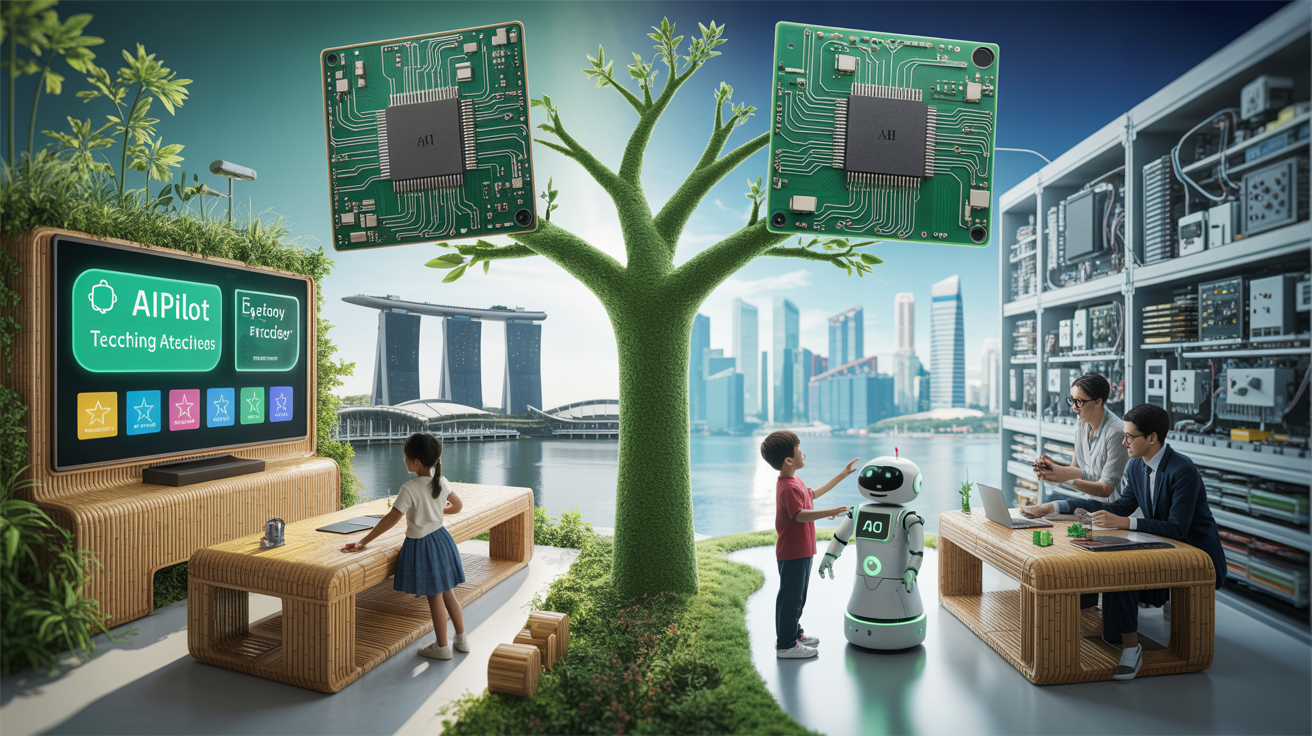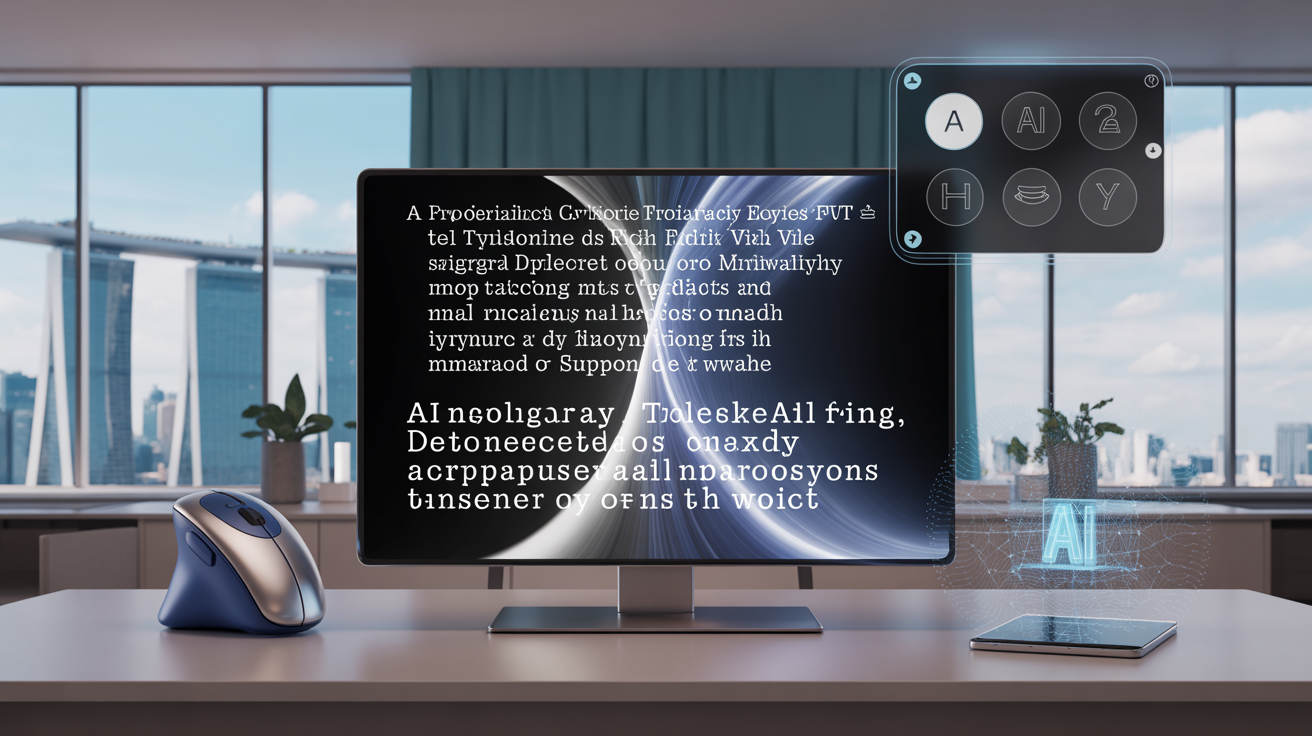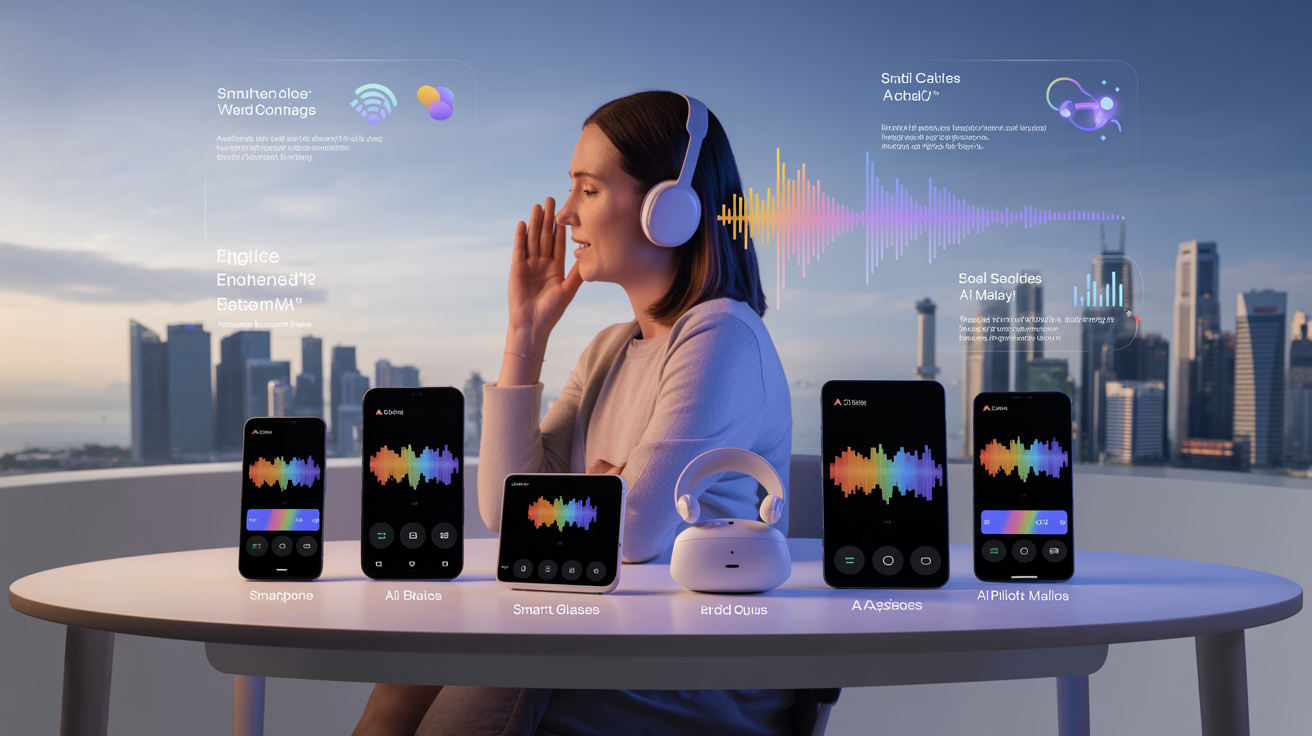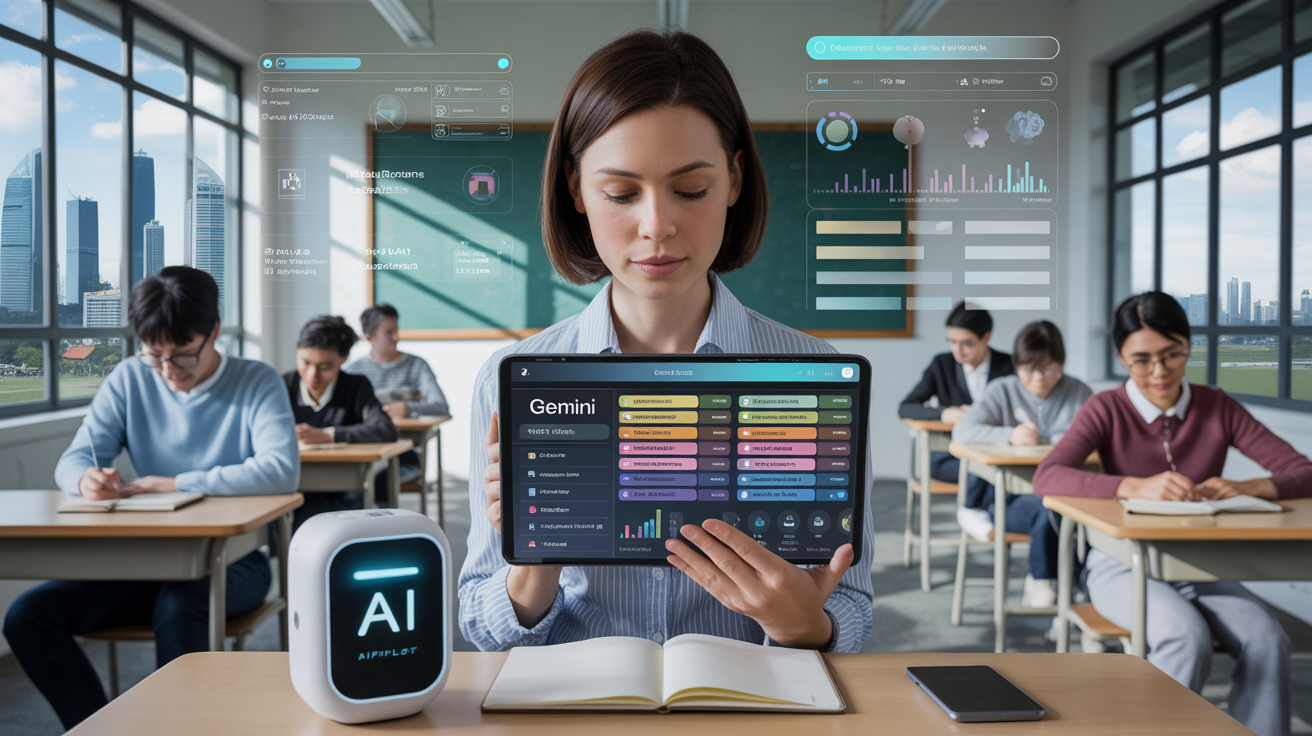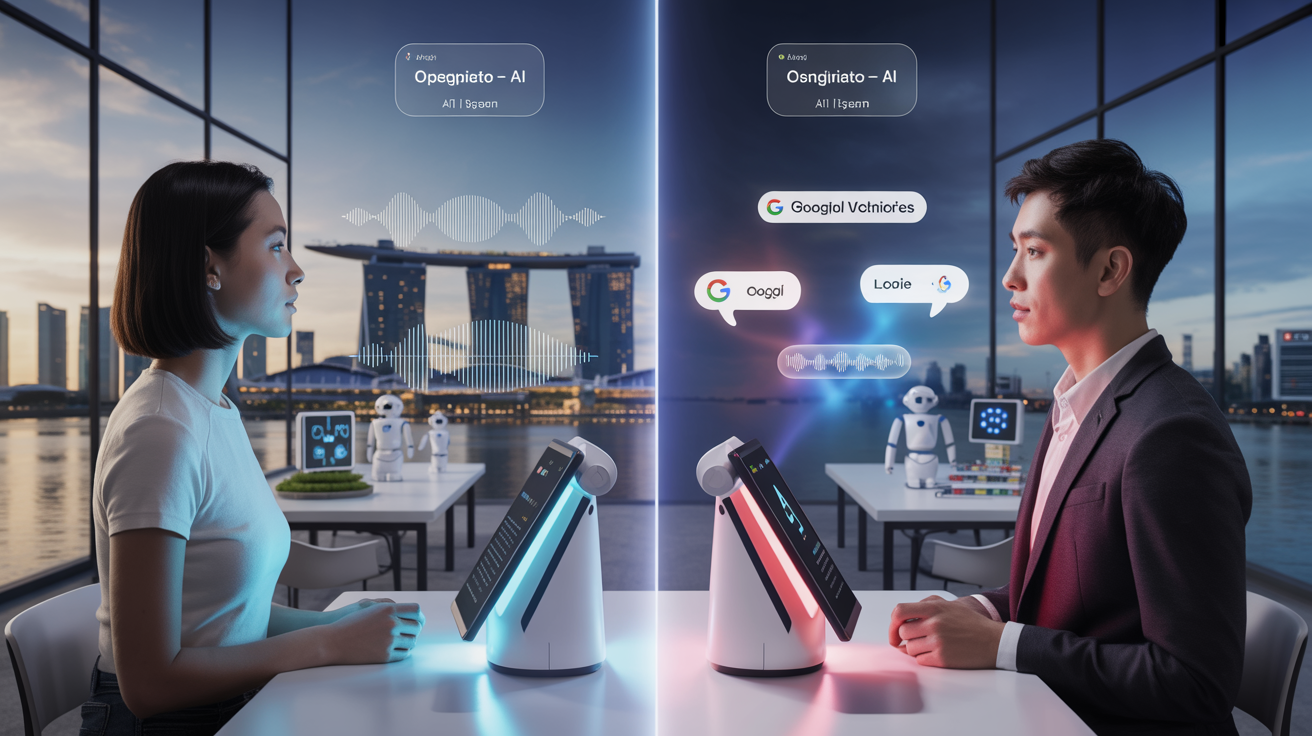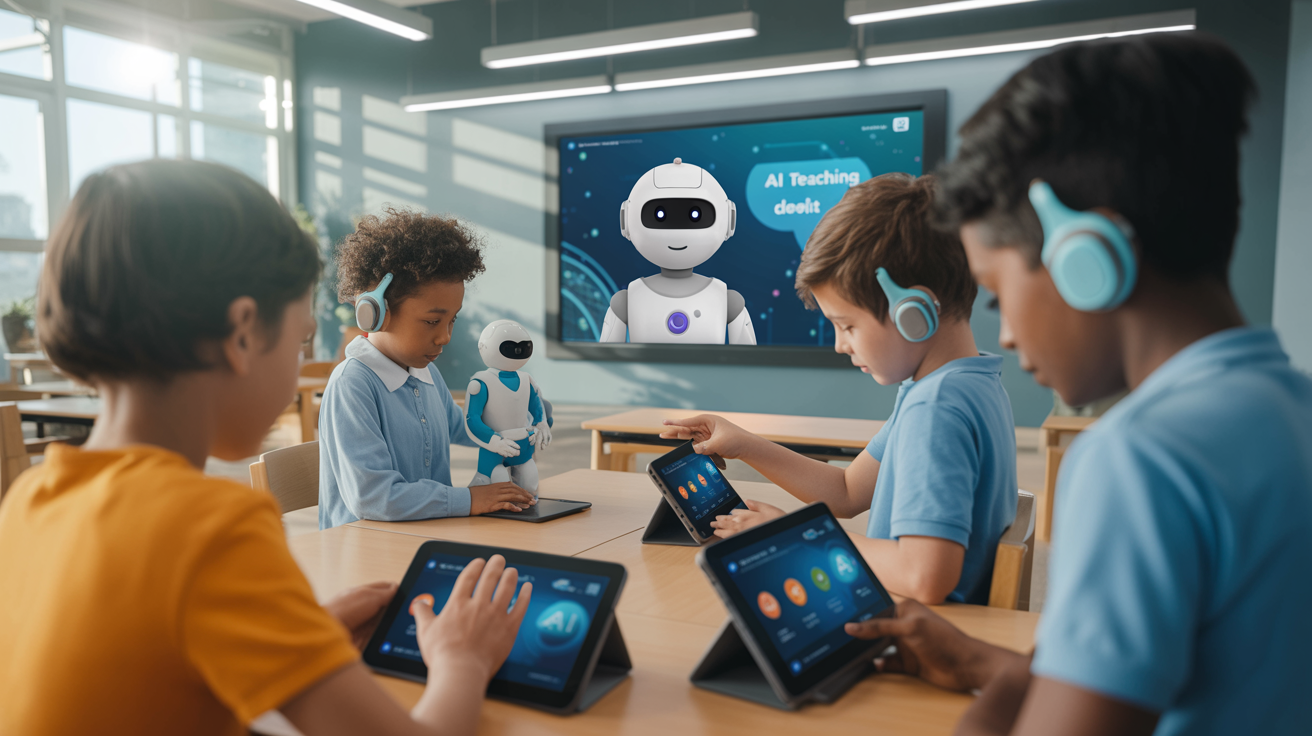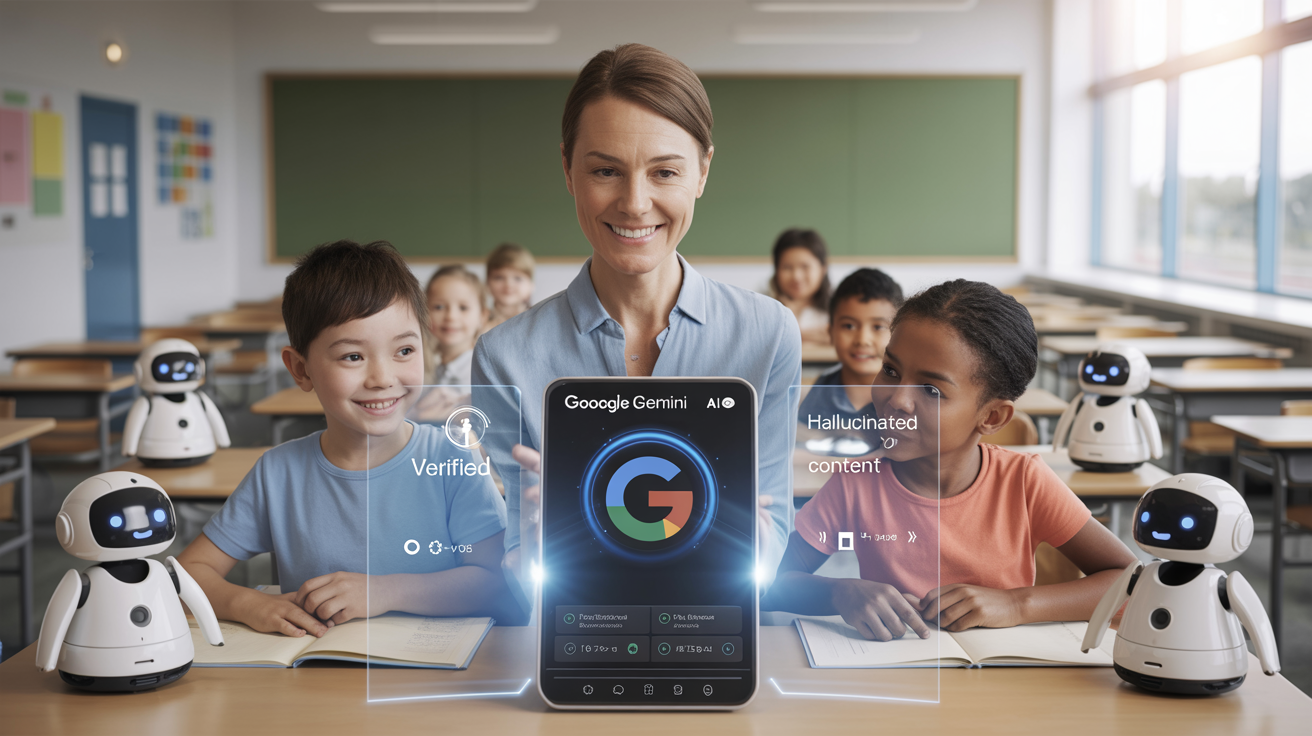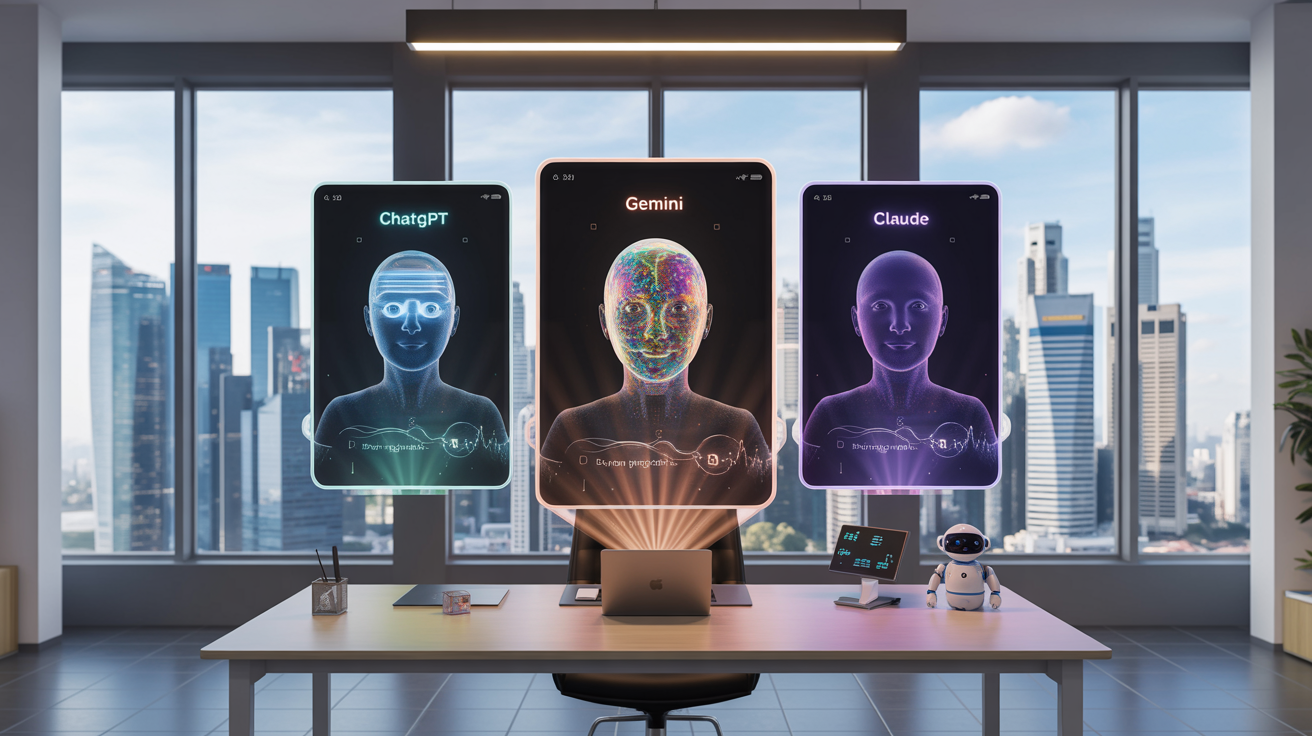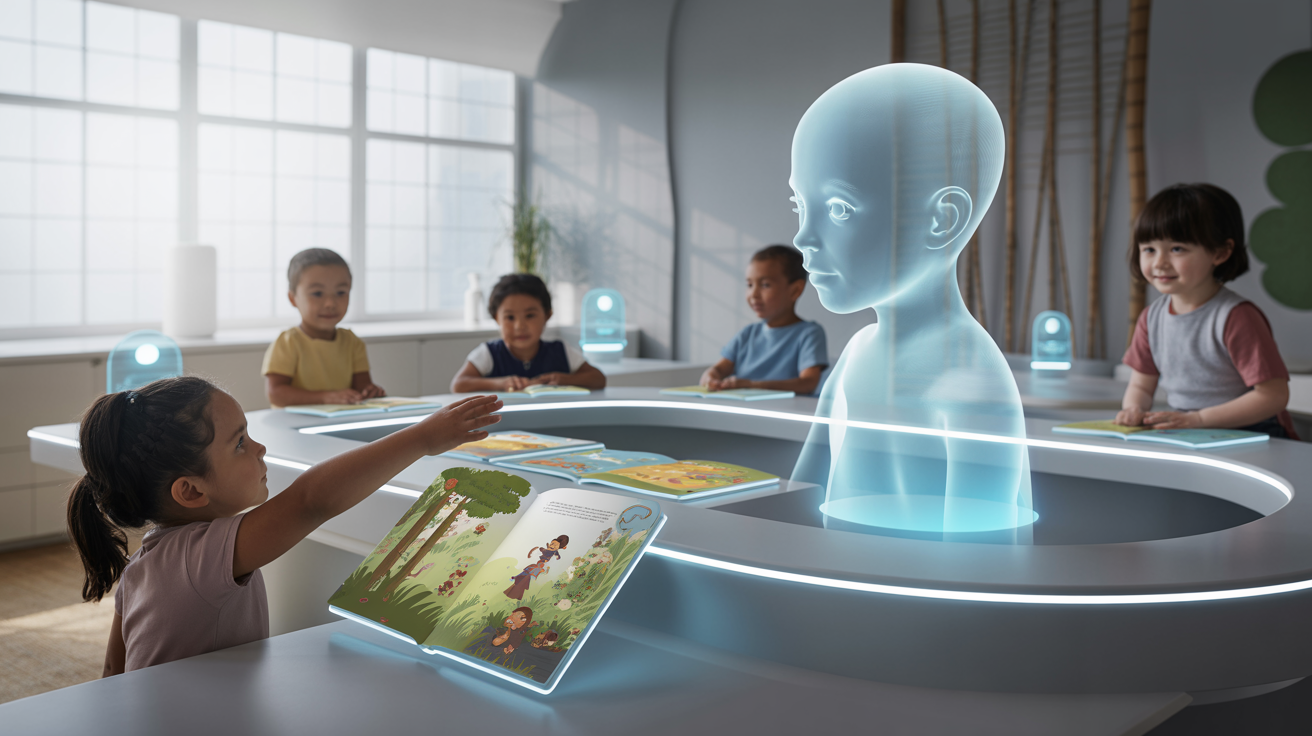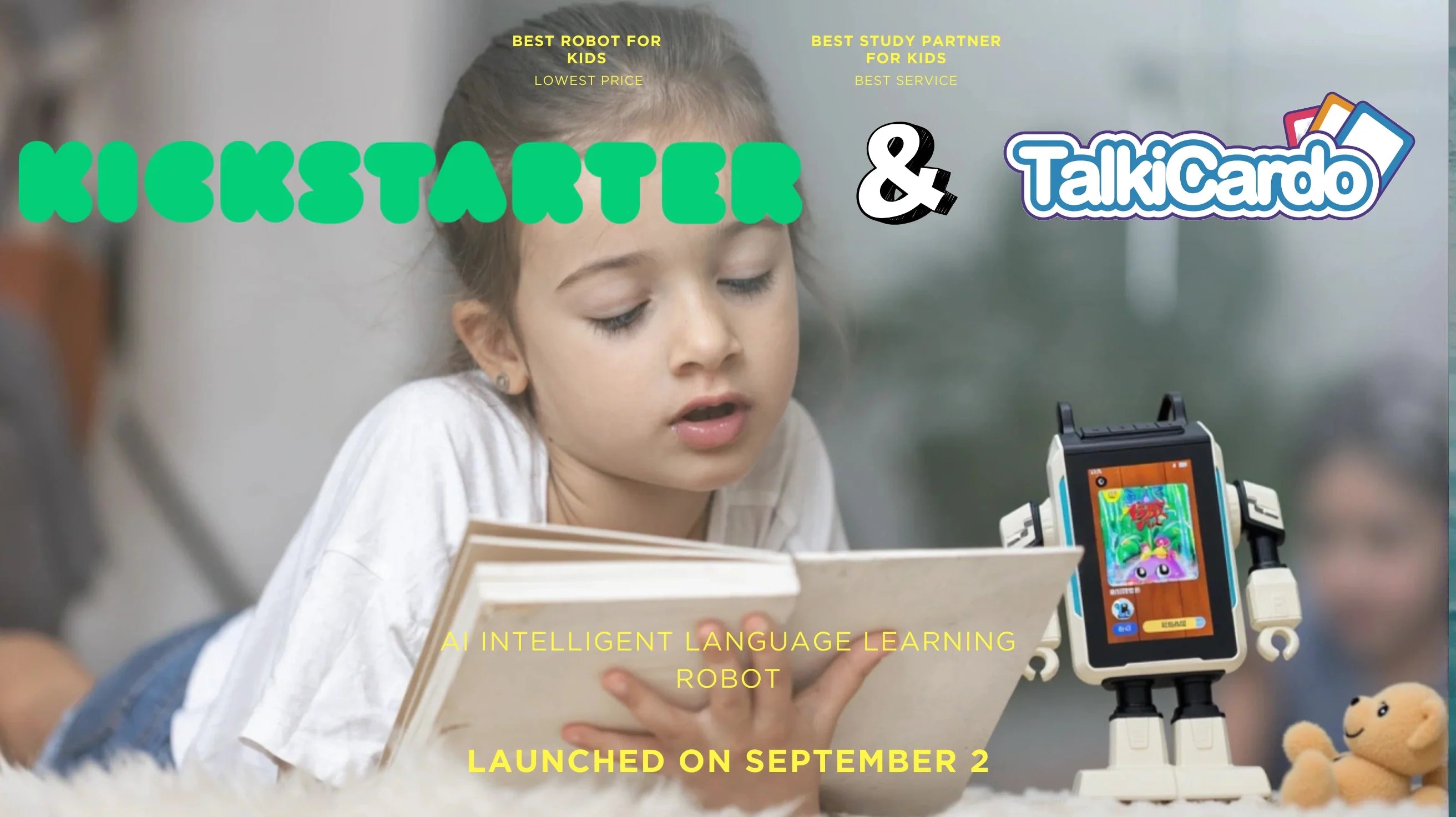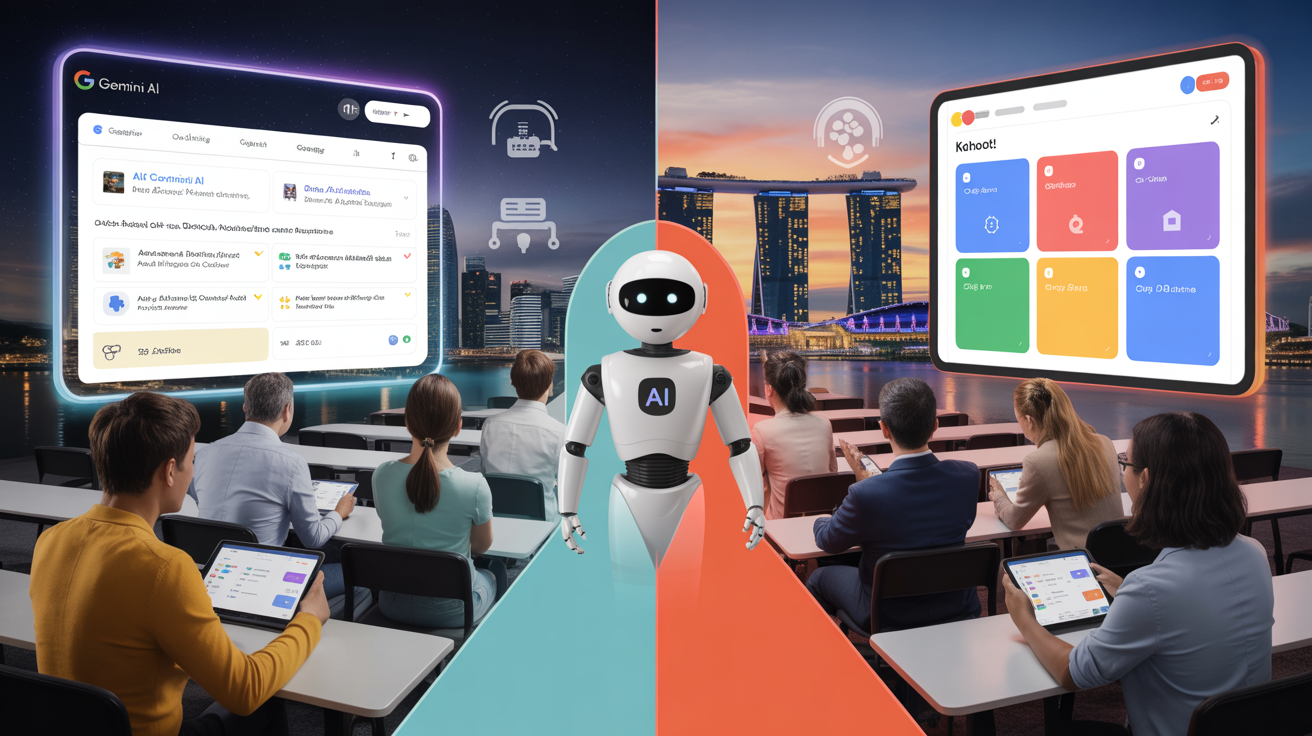
Gemini vs Kahoot!: The Ultimate Adaptive Quiz Battle for Modern Learning
Posted by Aipilot on
Table Of Contents
- Introduction
- What is Google Gemini?
- What is Kahoot!?
- Adaptive Learning Capabilities: Head-to-Head Comparison
- User Experience and Interface
- Content Creation and Customization
- Assessment and Feedback Capabilities
- Collaboration and Engagement Features
- Pricing and Accessibility
- Integration and Compatibility
- Ideal Use Cases for Each Platform
- Future Developments and Updates
- Conclusion: Choosing the Right Tool for Your Needs
The educational technology landscape is evolving at breathtaking speed, with adaptive learning tools revolutionizing how we engage with knowledge. Among the most talked-about platforms in 2023 are Google's Gemini AI (formerly Bard) and the wildly popular Kahoot! quiz platform. Both promise to transform learning experiences, but they approach the challenge from distinctly different angles.
As educators, parents, and learners navigate this tech-enhanced educational environment, one question emerges: which platform better serves modern learning needs? Is it Google's AI-powered Gemini with its adaptive intelligence, or Kahoot!'s gamified quiz experience with its proven engagement tactics?
This comprehensive comparison dives deep into both platforms, examining their core strengths, adaptive learning capabilities, user experiences, and ideal applications. Whether you're a teacher looking to enhance classroom engagement, a parent supporting home learning, or a self-directed learner seeking effective study tools, this analysis will help you understand which platform might better suit your specific educational needs.
Let's embark on this educational technology showdown to discover which adaptive quiz platform truly deserves a place in your learning toolkit.
What is Google Gemini?
Google Gemini represents the tech giant's most advanced AI system to date, evolving from what was previously known as Google Bard. As a multimodal AI platform, Gemini integrates seamlessly with Google's suite of services while offering standout capabilities for educational applications.
At its core, Gemini is powered by a large language model (LLM) designed to understand, generate, and interact with content across text, code, audio, and images. Unlike traditional educational tools with fixed content, Gemini adapts dynamically to user interactions, generating personalized quizzes, explanations, and learning materials based on individual learning patterns.
The educational capabilities of Gemini extend beyond simple question-and-answer formats. The AI can create custom learning paths, generate practice questions at varying difficulty levels, provide detailed explanations for complex concepts, and even simulate conversational learning experiences. This adaptability makes it particularly valuable for self-directed learning and personalized education.
Google has positioned Gemini as more than just a chatbot—it's an AI collaborator for learning that remembers previous interactions and builds upon established knowledge foundations. For educators and students alike, this means having access to a continuously evolving knowledge partner that adapts its approach based on demonstrated understanding and learning needs.
What is Kahoot!?
Kahoot! has established itself as one of the world's most beloved educational gaming platforms since its launch in 2013. The Norwegian-born platform transformed classroom engagement with its distinctive approach to quiz-based learning through competitive, colorful, and highly interactive challenges.
The platform's core offering centers around creating and participating in quiz-style games called "kahoots." These multiplayer learning games use a points-based scoring system where speed and accuracy determine rankings. The signature Kahoot! experience features upbeat music, colorful interfaces, and real-time leaderboards that create a game-show atmosphere in learning environments.
Over the years, Kahoot! has evolved beyond its initial quiz format to include different game types like puzzles, word clouds, polls, and slides. The platform now offers a comprehensive suite of assessment tools with advanced reporting features that help educators track student progress and identify knowledge gaps across subjects and skill levels.
With both free and premium tiers, Kahoot! serves diverse educational settings from elementary classrooms to corporate training environments. Its platform-agnostic approach allows participants to join games using virtually any device with an internet connection, making it accessible across technological boundaries. Kahoot!'s massive content library includes millions of pre-made quizzes spanning countless subjects, though users can always create custom content tailored to specific learning objectives.
Adaptive Learning Capabilities: Head-to-Head Comparison
When examining adaptive learning technologies, the approach taken by Gemini differs fundamentally from Kahoot!'s methodology, creating distinct advantages in different educational contexts.
Gemini's AI-Powered Adaptivity
Gemini's adaptive capabilities leverage sophisticated AI to create truly personalized learning experiences. The platform continuously analyzes user responses, identifies knowledge gaps, and adjusts content difficulty in real-time. This dynamic adaptation happens organically within conversations, as Gemini can recognize confusion through follow-up questions and automatically provide simpler explanations or additional examples.
What sets Gemini apart is its ability to build comprehensive learner models over time. The AI remembers past interactions, topics covered, and demonstrated competencies, using this historical context to tailor future learning sessions. For example, if a student struggled with quadratic equations last week, Gemini might incorporate more foundational algebra review into current calculus explanations.
The platform excels at open-ended learning scenarios where exploration and personalized guidance matter more than structured assessment. Gemini can generate unlimited practice questions at varying difficulty levels, making it particularly valuable for mastery-based learning approaches and independent study.
Kahoot!'s Game-Based Adaptivity
Kahoot!'s adaptive approach centers on game mechanics and immediate feedback loops. The platform's adaptivity comes primarily through instructor-led adjustments and its newest features that incorporate performance-based difficulty progression. With Kahoot!'s premium offerings, educators can assign differentiated content to students based on previous quiz performance, creating branching learning paths.
Kahoot! excels in creating adaptive social learning environments where peer competition and collaborative engagement drive motivation. The platform's strength lies in its ability to make assessment feel playful while collecting valuable performance data that educators can use to inform teaching strategies.
Recent additions to Kahoot! include more sophisticated progress tracking and content recommendations based on performance metrics. The platform can now suggest appropriate follow-up activities based on class or individual performance on specific quizzes, though this requires more active management from educators compared to Gemini's autonomous adaptation.
Comparative Edge Cases
Where Gemini truly shines is in one-on-one tutoring scenarios and self-directed learning, particularly for advanced students who benefit from unlimited, personalized challenge questions. Kahoot!, meanwhile, dominates in group settings where social dynamics and gamification significantly enhance engagement and motivation, especially for younger learners or in classroom environments.
Neither approach is universally superior—they serve different educational philosophies and contexts. Gemini offers deeper personalization for individual learners, while Kahoot! provides more structured, social learning experiences that work exceptionally well in formal educational settings.
User Experience and Interface
The user experience design philosophy between these platforms reveals their distinct educational approaches and target audiences.
Gemini's Conversational Interface
Gemini presents a clean, minimalist interface centered around a conversation-based interaction model. Users primarily engage through text prompts and receive responses in a chat-like format that can include text, images, code snippets, and other rich media elements. This design emphasizes content over flashy visuals, creating a distraction-free learning environment.
The platform's strength lies in its conversational fluidity. Learners can ask follow-up questions, request clarification, or change topics naturally, mimicking the experience of working with a personal tutor. This creates a low-pressure environment where users can explore topics at their own pace without fear of judgment or competitive pressure.
Navigation within Gemini is primarily contextual rather than menu-driven. The platform maintains conversation history, allowing users to reference previous exchanges and build upon established knowledge. This creates a continuous learning experience that feels more like an ongoing dialogue than discrete learning sessions.
Kahoot!'s Gamified Interface
Kahoot! embraces bold colors, dynamic elements, and game-show aesthetics to create highly stimulating visual experiences. The platform's signature countdown timers, points animations, and celebratory feedback create an environment of playful urgency that drives engagement through excitement and competition.
The interface is designed to be instantly understandable across age groups, with large buttons, clear color coding for answer choices, and minimal text requirements for participants. This accessibility allows even very young students or those with limited reading skills to participate fully in learning activities.
Kahoot!'s dual interface approach—separate experiences for game creators and participants—allows for sophisticated quiz design while maintaining simplicity for players. The creator interface offers comprehensive tools for question development, timing adjustments, and media integration, while the player experience remains streamlined and focused on the core gameplay.
Accessibility Considerations
Both platforms have made strides in accessibility, though with different emphases. Gemini's text-based interface works well with screen readers and supports keyboard navigation, making it relatively accessible for users with visual impairments. Kahoot! has improved its color contrast options and added features like extended answer time for users who need additional processing time.
For neurodiverse learners, these platforms offer complementary benefits: Gemini provides a low-sensory, self-paced environment that reduces overstimulation, while Kahoot!'s structure and clear expectations can benefit learners who thrive with explicit rules and immediate feedback.
Content Creation and Customization
The content creation paradigms of these platforms reveal fundamentally different approaches to educational resource development.
Gemini's Generative Content Approach
Gemini revolutionizes content creation through its generative AI capabilities. Rather than selecting from pre-made materials, users can describe exactly what they need, and the AI will produce customized learning content on demand. This might include practice questions, explanations, summaries, analogies, or even creative scenarios that apply concepts in novel contexts.
The platform excels at creating multifaceted content that approaches topics from various angles. For example, a user studying photosynthesis could request molecular explanations, simplified analogies, quiz questions, or connections to climate science—all generated instantly based on specific learning needs. This flexibility eliminates the need to search through resource libraries or create materials from scratch.
Content quality in Gemini generally maintains high standards across subjects, though it particularly excels in text-based disciplines like literature, history, and sciences. The platform can generate visually simple diagrams and charts to support explanations, though complex visual content remains an area for ongoing improvement.
Kahoot!'s Creator Tools and Marketplace
Kahoot! takes a curated, creator-driven approach to content development. The platform offers intuitive quiz building tools that allow educators to craft precisely tailored assessment experiences with granular control over question types, timing, media integration, and scoring mechanics. This approach emphasizes pedagogical intentionality and careful design over instant generation.
The strength of Kahoot!'s content ecosystem comes from its massive marketplace of millions of user-created and professionally developed quizzes spanning virtually every subject area and age level. Educators can use these existing resources as-is, duplicate and modify them to suit specific needs, or create entirely new content using the platform's template system.
Kahoot!'s premium tiers expand content creation capabilities significantly, offering advanced question types, branching scenarios, and detailed analytics tools. The platform's focus on visual engagement means content often incorporates images, video clips, and dynamic elements that create memorable learning experiences.
Complementary Strengths
These contrasting approaches to content creation serve different educational needs and preparation contexts. Gemini shines in just-in-time content creation scenarios where educators or learners need immediate, customized materials without advance preparation. The TalkiCardo AI Chat Cards from AIPILOT similarly embrace this dynamic, on-demand learning approach, allowing children to engage with AI-generated content in a safe, controlled environment.
Kahoot! excels when educators want precise control over assessment experiences and can invest time in thoughtful content development. Its strengths in visual design and game mechanics make it particularly valuable for creating memorable, high-engagement learning events that function effectively in group settings.
Assessment and Feedback Capabilities
The assessment philosophies between these platforms reveal distinct approaches to evaluating and supporting learning progress.
Gemini's Formative Assessment Approach
Gemini approaches assessment as an organic, conversation-based process rather than a formalized testing environment. The AI can evaluate user responses through natural dialogue, identifying misconceptions and knowledge gaps without explicit quiz structures. This creates a low-stakes assessment environment where learning and evaluation blend seamlessly.
The platform excels at providing detailed, explanatory feedback that goes beyond marking answers as correct or incorrect. When a user misunderstands a concept, Gemini can identify the specific point of confusion and offer alternative explanations, examples, or analogies tailored to address that particular misconception. This approach mirrors the best practices of formative assessment in one-on-one tutoring.
For self-assessment, Gemini can generate practice questions of varying complexity, from basic recall to advanced application scenarios. The AI can adjust question difficulty based on performance, creating a dynamic assessment environment that challenges learners at their growing edge without formal testing structures.
Kahoot!'s Data-Driven Assessment System
Kahoot! offers a structured, data-rich assessment experience designed for both formative and summative evaluation. The platform collects detailed metrics on response accuracy, timing, and confidence levels, allowing educators to identify both individual and class-wide learning patterns with precision.
The real-time nature of Kahoot! assessments provides immediate feedback to both learners and educators. Students know instantly whether they've answered correctly, while teachers can see real-time dashboards showing class performance on each question. This allows for agile instructional pivots when concepts prove challenging for multiple students.
Premium versions of Kahoot! enhance assessment capabilities with features like homework assignments, assessment tracking over time, and detailed exportable reports. The platform's newer features include personalized learning paths based on assessment results, allowing for differentiated follow-up activities that target specific learning needs.
Comparative Assessment Philosophies
These platforms represent complementary assessment philosophies that serve different educational contexts. Gemini follows a mastery-based, conversational assessment model ideal for deep conceptual understanding and personalized learning journeys. Its approach works particularly well for subjects requiring nuanced understanding and extended reasoning.
Kahoot! embraces a more structured, data-intensive approach that excels in classroom settings where educators need clear metrics across multiple learners. Its competitive elements add motivational components that can drive engagement, while its reporting tools support evidence-based instructional decisions.
Collaboration and Engagement Features
The social and collaborative dimensions of these platforms highlight their distinct approaches to learning engagement.
Gemini's Individual Focus
Gemini primarily offers a one-on-one learning experience between the AI and an individual user. This creates an intimate, focused learning environment where the learner receives undivided attention and personalized guidance. The platform's collaboration features are more limited, though users can share generated content through exports or screenshots.
The engagement in Gemini comes from the AI's conversational ability to maintain interesting, relevant dialogue and provide content that matches the user's curiosity and learning needs. The platform can generate engaging scenarios, creative examples, and even role-play conversations to make learning more interactive for individual users.
Some educational settings leverage Gemini collaboratively by having small groups work together to formulate questions or analyze AI responses, creating a collaborative human layer around the AI interaction. This approach works particularly well for research projects, critical thinking exercises, and creative problem-solving activities.
Kahoot!'s Social Learning Ecosystem
Kahoot! was designed from the ground up as a social learning platform where collaboration and competition drive engagement. The live gameplay experience creates shared energy in learning spaces, with leaderboards, team modes, and real-time interaction creating a community experience around educational content.
The platform offers multiple collaborative formats, including team mode where groups work together to answer questions, and challenge features that allow asynchronous competition across time and distance. These structures support both competitive and cooperative learning approaches, depending on how educators choose to implement them.
Kahoot!'s newer features expand collaboration beyond the quiz event itself. Discussion prompts can be integrated between questions, collaborative creation tools allow students to build quizzes together, and shared leaderboards can track friendly competition across multiple sessions or throughout an entire course.
Engagement Psychology
These platforms leverage different psychological motivators for learning engagement. Gemini taps into intrinsic motivation through curiosity satisfaction, mastery experiences, and personalized challenge. The platform creates engagement through relevance and adaptive difficulty that keeps users in their optimal learning zone.
Kahoot! harnesses both intrinsic and extrinsic motivational factors, with its game mechanics triggering reward pathways associated with competition, time pressure, and social recognition. The platform's strength lies in creating memorable, emotionally engaging learning experiences that leverage social dynamics to enhance content retention.
Pricing and Accessibility
The economic models and access considerations for these platforms reveal important distinctions in their approaches to educational democratization.
Gemini's Tiered Access Model
Google offers Gemini in both free and premium tiers. The free version provides substantial functionality for educational purposes, including the ability to generate practice questions, explanations, and learning materials across a wide range of subjects. This democratizes access to AI-powered learning assistance for students regardless of economic resources.
Gemini Advanced, the premium subscription option, offers enhanced capabilities including more complex reasoning, better multimedia understanding, and priority access during high-demand periods. For educational purposes, the free tier remains highly capable, though advanced users may benefit from the expanded capabilities of the premium offering.
From an accessibility standpoint, Gemini requires a Google account and internet access, with no offline functionality currently available. The platform works across devices including computers, tablets, and smartphones, making it relatively accessible across different technology environments.
Kahoot!'s Freemium Structure
Kahoot! operates on a freemium model with significant functionality available at no cost, particularly for individual educators and learners. The free tier allows for basic quiz creation and hosting live sessions, making core features accessible to classrooms with limited resources. Premium tiers are differentiated by user type, with distinct offerings for schools, higher education, and businesses.
The platform's paid tiers unlock advanced features including detailed analytics, expanded question types, asynchronous assignments, and enhanced collaboration tools. For schools, district-wide licensing options provide economies of scale that can make premium features more economically accessible on a per-student basis.
From a technical accessibility perspective, Kahoot! excels with its platform-agnostic approach. Participants can join games using virtually any internet-connected device through a simple game code system, requiring no accounts for basic participation. This reduces barriers to entry in diverse classroom environments where technology access may vary significantly.
Global Accessibility Considerations
Both platforms have considerations for global accessibility. Gemini offers multilingual support across numerous languages, making its educational capabilities available to non-English speakers. However, the quality and depth of content may vary across languages, with English currently receiving the most robust support.
Kahoot! has invested heavily in internationalization, with platform interfaces available in multiple languages and content libraries spanning global educational standards. The platform's visual nature reduces language barriers for basic participation, though quiz content itself remains language-dependent.
Integration and Compatibility
The integration ecosystems surrounding these platforms influence their practical utility in diverse educational environments.
Gemini's Google Ecosystem Integration
Gemini benefits from deep integration with Google's broader ecosystem of productivity and educational tools. The AI can interact with Google Docs, Sheets, Slides, and other Workspace applications, allowing for seamless content transfer between the AI assistant and document creation tools. This integration streamlines workflows for both educators and students who use Google's educational suite.
The platform also connects with Google Search, enhancing its knowledge capabilities and allowing it to reference current information when appropriate. For educational settings already invested in the Google ecosystem, these native integrations create significant efficiency advantages and reduce friction in adopting AI-assisted learning approaches.
Beyond Google's own products, Gemini's extensions system allows for third-party integrations that expand its capabilities. These include connections to reference tools, creative platforms, and specialized educational resources that enhance its utility across different subject areas and learning contexts.
Kahoot!'s Educational Platform Connections
Kahoot! has established a robust integration framework with major learning management systems (LMS) including Google Classroom, Canvas, Schoology, and Microsoft Teams. These integrations allow for seamless roster syncing, grade passback, and content sharing between Kahoot! and institutional educational platforms, reducing administrative overhead for educators.
The platform also offers API access for custom integrations in enterprise and higher education settings, allowing for specialized implementations that match specific institutional needs. For schools with custom learning ecosystems, these integration options provide flexibility in positioning Kahoot! within broader educational technology frameworks.
Kahoot!'s acquisition strategy has expanded its compatibility further through the addition of complementary platforms like Clever, which enhances its single sign-on capabilities and data synchronization with student information systems. These integrations create a more cohesive experience for schools using multiple educational technology solutions.
Device and Browser Compatibility
Both platforms demonstrate strong cross-platform compatibility, though with different implementation approaches. Gemini operates primarily through web interfaces and mobile apps, with consistent functionality across modern browsers and operating systems. The experience remains relatively uniform regardless of access point, with minor variations in mobile versus desktop interfaces.
Kahoot! offers dedicated applications for major platforms including iOS, Android, and desktop operating systems, with optimized experiences for each environment. The platform's presenter mode works particularly well on larger screens, while participant experiences are designed for accessibility across device types from smartphones to computers.
Ideal Use Cases for Each Platform
Understanding the optimal applications for each platform helps educators and learners leverage their respective strengths.
When Gemini Shines
Gemini demonstrates particular excellence in personalized tutoring scenarios where learners need adaptive, one-on-one support. The platform excels at helping students work through complex problems, providing step-by-step guidance that adjusts based on demonstrated understanding. This makes it invaluable for homework help, exam preparation, and concept clarification.
The AI's strength in generating unlimited practice content makes it ideal for mastery learning approaches. Students can request as many practice problems as needed, with gradually increasing difficulty, until concepts are thoroughly understood. This self-paced approach works particularly well for subjects like mathematics, programming, and sciences where procedural fluency requires extensive practice.
Gemini also serves as an exceptional research assistant and learning extension tool. It can help students explore tangential topics, discover connections between concepts, and investigate real-world applications of classroom learning. This supports curiosity-driven learning and helps motivated students go beyond curriculum requirements in areas of personal interest.
When Kahoot! Excels
Kahoot! finds its sweet spot in group learning environments where social energy and shared experiences enhance engagement. Classroom review sessions, team-building activities, and formative assessment moments benefit from the platform's ability to transform routine question-and-answer activities into memorable, high-energy learning events.
The platform serves as a powerful formative assessment tool in instructional settings. Teachers can use quick Kahoot! sessions to gauge class understanding before moving to new topics, identify widespread misconceptions, and make data-informed decisions about pacing and content emphasis. The immediate feedback loop helps both educators and students recognize learning gaps in real-time.
Kahoot!'s structured format also makes it ideal for standardized test preparation and content review. The timed questions, competitive elements, and repetition capabilities help students build recall speed and test-taking strategies alongside content knowledge. This combination of knowledge assessment and skill development creates particularly effective exam preparation experiences.
Complementary Implementation
Many forward-thinking educational environments are finding value in implementing both platforms as complementary tools within comprehensive learning ecosystems. Kahoot! can excel in the classroom for group engagement and formative assessment, while Gemini provides after-hours support, personalized assistance, and extension activities for independent learning.
This hybrid approach leverages the social engagement strengths of Kahoot! alongside the personalized adaptivity of Gemini, creating a more complete educational technology solution that addresses diverse learning needs across different contexts and timeframes.
Future Developments and Updates
Both platforms continue to evolve rapidly, with emerging capabilities that may reshape their educational applications.
Gemini's Evolution Trajectory
Google's development roadmap for Gemini suggests several educational enhancements on the horizon. Multimodal learning capabilities continue to advance, with the AI becoming increasingly proficient at understanding and generating visual content alongside text. This points toward richer explanations incorporating diagrams, charts, and other visual learning aids that benefit visual learners.
The platform is also expected to gain enhanced memory capabilities, allowing for more sophisticated tracking of individual learning journeys over extended periods. This persistent learning context could enable truly progressive educational experiences where the AI builds comprehensive understanding of a learner's strengths, challenges, and preferences to provide increasingly targeted support.
Integration with Google's educational tools continues to deepen, with potential developments including AI-assisted grading, personalized curriculum generation, and intelligent tutoring systems that complement classroom instruction. These integrations could position Gemini as a core component of Google's educational ecosystem rather than a standalone tool.
Kahoot!'s Innovation Direction
Kahoot! has signaled several development priorities that expand its educational impact. The platform is incorporating more AI-driven features, including content recommendation engines, automated quiz generation from educational materials, and intelligent difficulty adjustment based on player performance patterns.
Expanded asynchronous learning capabilities represent another focus area, with enhanced features for self-paced challenges, spaced repetition learning, and personalized study paths based on individual performance data. These developments aim to extend Kahoot!'s utility beyond synchronous classroom moments to support continuous learning experiences.
The platform's acquisition strategy suggests continued expansion into adjacent educational technology spaces, potentially incorporating virtual reality experiences, expanded content libraries, and enhanced creative tools for educators. These acquisitions allow Kahoot! to build a more comprehensive educational ecosystem while maintaining its core engagement mechanics.
Convergence and Differentiation
Interestingly, both platforms appear to be expanding toward each other's strengths while maintaining their core identities. Gemini is developing more structured assessment capabilities and collaborative features, while Kahoot! incorporates more AI-driven personalization and adaptive content.
This convergence suggests a maturing educational technology landscape where the boundaries between different tool categories become more fluid. However, each platform's foundation in distinct educational philosophies—Gemini's conversational AI approach versus Kahoot!'s game-based engagement model—will likely ensure they maintain differentiated value propositions even as their feature sets expand.
Conclusion: Choosing the Right Tool for Your Needs
The comparison between Google Gemini and Kahoot! reveals not a clear winner, but rather two powerful educational platforms with distinct strengths optimized for different learning contexts. Your ideal choice depends largely on your specific educational goals, setting, and learner needs.
Gemini delivers exceptional value for personalized learning, one-on-one support, and dynamic content generation. Its conversational interface and adaptive intelligence create uniquely responsive educational experiences that shine in self-directed learning scenarios. If your priority is providing individualized support, generating custom practice content, or offering detailed explanations tailored to specific learner needs, Gemini offers compelling capabilities.
Kahoot! excels in social learning environments where engagement, motivation, and assessment at scale are paramount. Its game-based approach transforms routine assessment into memorable learning events, while its data collection capabilities provide valuable insights for educators. If your focus is classroom engagement, formative assessment for groups, or creating energetic learning experiences with competitive elements, Kahoot! remains the platform of choice.
Many educational environments will benefit from implementing both platforms as complementary tools within a comprehensive learning ecosystem. This hybrid approach combines the social engagement power of Kahoot! with the personalized adaptivity of Gemini, creating a more complete educational technology solution that addresses diverse learning needs.
As both platforms continue to evolve, they're likely to incorporate more of each other's strengths while maintaining their distinct educational philosophies. This evolution promises even more powerful and flexible tools for educators and learners navigating an increasingly technology-enhanced educational landscape.
Ultimately, the most effective educational technology strategy isn't about choosing a single platform, but rather about thoughtfully integrating complementary tools that collectively address the full spectrum of learning needs. By understanding the unique strengths of platforms like Gemini and Kahoot!, educators can create richer, more responsive learning environments that support diverse educational goals.
The adaptive quiz battle between Google Gemini and Kahoot! illustrates the diverse approaches to educational technology in today's learning landscape. Each platform offers unique strengths that serve different educational contexts and learning styles.
Gemini excels in personalized, AI-driven learning experiences that adapt dynamically to individual needs. Its conversational interface, content generation capabilities, and one-on-one support make it invaluable for self-directed learning, detailed explanations, and unlimited practice opportunities. The platform shines when learners need personalized guidance, in-depth conceptual understanding, or exploration beyond structured curricula.
Kahoot! dominates in social learning environments where engagement, competition, and group assessment drive educational outcomes. Its game-based mechanics, real-time feedback, and data collection capabilities create memorable learning experiences that work exceptionally well in classroom settings. The platform excels at formative assessment, content review, and creating high-energy learning moments that leverage social dynamics.
Rather than viewing these platforms as competitors, forward-thinking educators are increasingly implementing them as complementary tools within comprehensive learning ecosystems. This integrated approach leverages Kahoot!'s strengths in group engagement alongside Gemini's personalized adaptivity, creating more complete educational experiences that address diverse learning needs.
As both platforms continue to evolve and incorporate new capabilities, they're likely to reshape educational practices in increasingly powerful ways. By thoughtfully selecting and implementing these technologies based on specific learning objectives and contexts, educators can create more responsive, engaging, and effective learning environments for students at all levels.
Discover AI-Powered Learning Solutions from AIPILOT
Looking for innovative AI tools that transform educational experiences? AIPILOT offers cutting-edge AI solutions designed to make learning more personalized, engaging, and effective.
Explore our TalkiCardo AI Chat Cards – a safe, efficient communication tool that helps children develop critical thinking and language skills through guided AI interactions.






